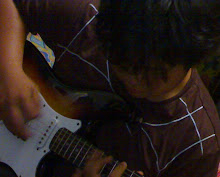[ Borneo Lute ]
Introduction
The sape is one of the string instruments from the lute family, which has a short neck.It is made from soft wood, usually the meranti's. The sape has quite an elongated body which is hollowed out and functions as a resonator. The shape of the body looks like a sampan and is often called 'the boat lute' in the west.
History
The sape is a traditional lute of many of the Orang Ulu or "upriver people", who live in the longhouses that line the rivers of Central Borneo. Sapes are carved from a single bole of wood; many modern instruments reach over a metre in length. It is famous among the Kayan and Kenyah tribes of East Malaysia. It is used in entertainment and to accompany dances such as 'Datun Julud and 'Ngajat' (one of the warrior dances associated with headhunting according to legend). Originally , sape strings were made from the Sago tree but now these have been replaced by nylon strings.Tuning
One of the systems that are usually used are as follows:
String 1: Tune like the middle C of the piano
String 2:Tune like C one octave lower than middle C
String 3: Tune to A, a minor third below middle C
String 4: Tune to F, a perfect fourth above middle C
Playing
All the strings are plucked using the thumb and only one of the strings is used to play the melody. The rest of the strings function as drone strings, playing only open strings. The strings are fixed across the body, supported by a bridge which is movable, for tuning purposes.
Songs
The sape repertoire comprises songs like: Sambe Main Daton, Jempen Letoh, Kabun, Kelewah, Eng-tang Takoh and Nau-hu. The Kelewah is usually performed for the purpose of entertainment of the residents of the longhouse. The sape is usually played in a duet, playing in two registers, low and high. Sape music is best known through the works of the late, great Tusau Padan. The tradition of Sape at present remains in the good hands of Uchau Bilong and Mathew Ngau Jau.
Construction
Initially the sape was a fairly limited instrument with two strings, three strings and four strings. Its use was restricted to a form of ritualistic music to induce trance. It gradually became a social instrument, used as accompaniment for dances and as a form of entertainment. Today, three, four or five-string instruments are used, with a range of more than three octaves.
Application
Musically, the sape is a simple instrument. One string carries the melody, the accompanying strings are struck rhythmically to produce a drone. In practice, the music is quite complex, with many ornamentations and thematic variations. There are two common modes, one for the men's longhouse dance and the other for the woman's longhouse dance. There also is a third rarely used mode. Sape music is usually inspired by dreams; there are over 35 traditional pieces with many variations. The overall repertoire is slowly increasing.SOURCE: Angelfire




0 comments:
Post a Comment